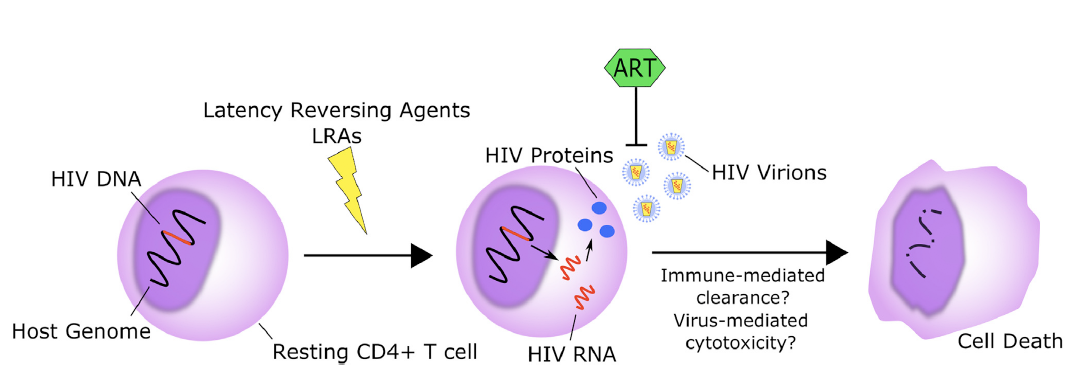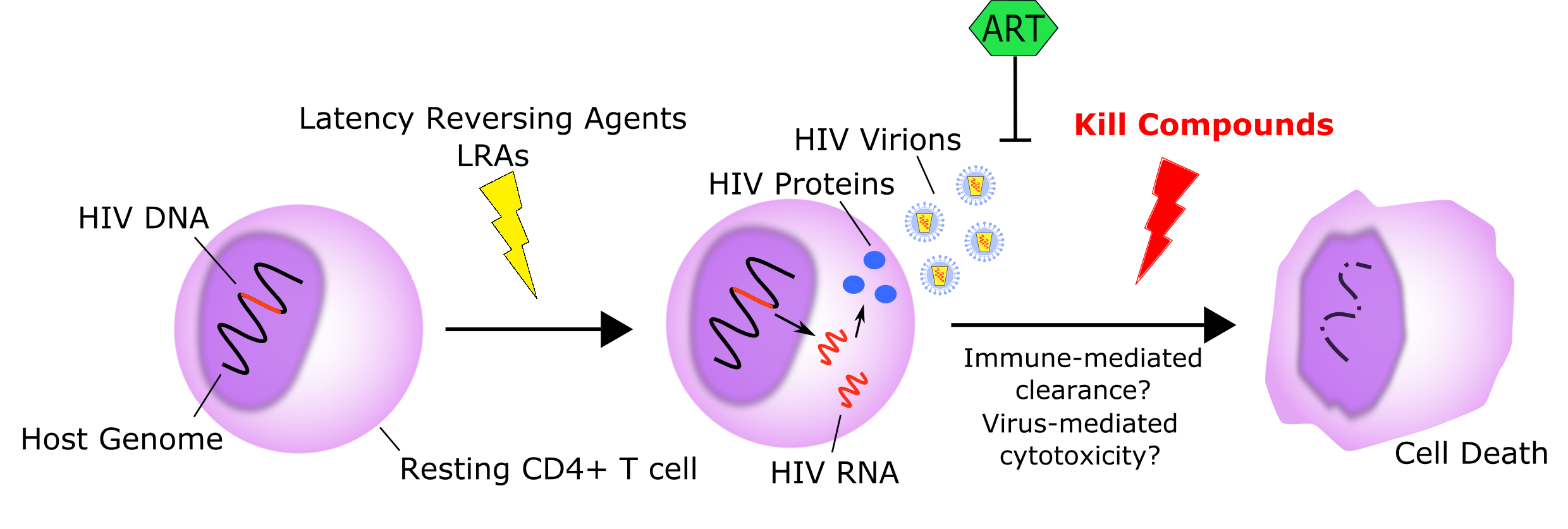15 Jan 2018
Getting the “kill” into “shock and kill”: strategies to eliminate latent HIV
Despite the great advances in the treatment of Human immunodeficiency virus (HIV), treatment is life long and there is no cure. This is because HIV goes into hiding inside cells and isn’t visible to drugs or the immune system.
One strategy to eliminate the virus that persists on treatment is to wake it up to induce death of the cell. This is called “shock and kill”. We now have multiple drugs that can ‘’shock’’ HIV, but there is an urgent need to combine this with drugs that ’’kill’’.
In a paper published in the journal Cell Host & Microbe, our researchers review new ‘’kill’’ approaches that don’t rely on the immune system, but hijack death pathways triggered by the virus itself.
"We think this will be a promising new strategy that few groups are actively pursuing." Said Youry Kim, from Professor Sharon Lewin's and A/Professor Paul Cameron's Lab.

Shock and Kill Strategy to Eliminate HIV Latently Infected Cells: The ‘‘shock and kill’’ strategy uses LRAs to increase HIV transcription, protein expression, and virion production. The cell may potentially die through virus-mediated cytopathic events or immune-mediated clearance. LRAs, latency reversing agents; ART, antiretroviral therapy.

The paper was authored by PhD Student Kim Youry, Dr Jenny Anderson and Professor Sharon Lewin.


